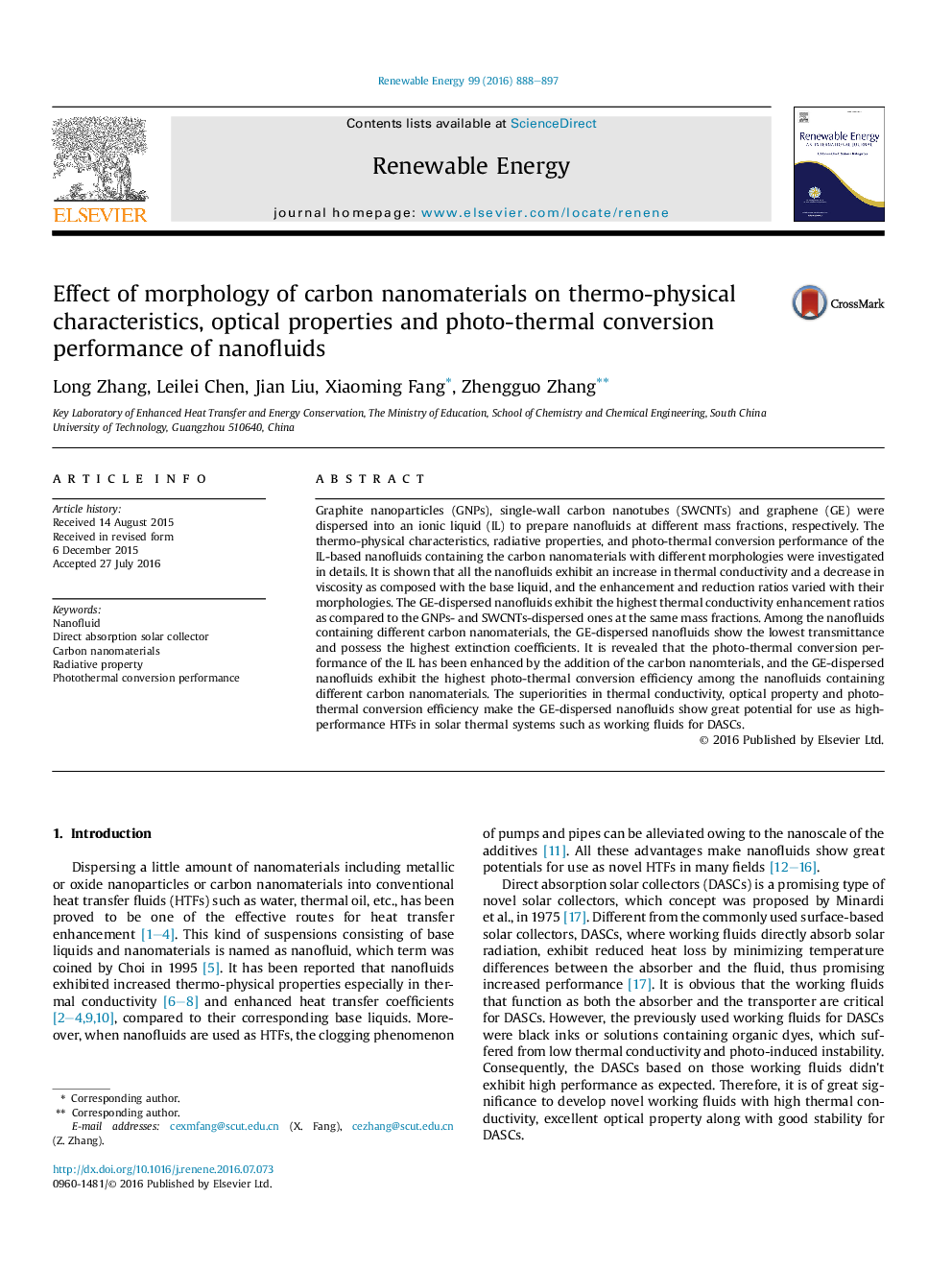| Article ID | Journal | Published Year | Pages | File Type |
|---|---|---|---|---|
| 6765784 | Renewable Energy | 2016 | 10 Pages |
Abstract
Graphite nanoparticles (GNPs), single-wall carbon nanotubes (SWCNTs) and graphene (GE) were dispersed into an ionic liquid (IL) to prepare nanofluids at different mass fractions, respectively. The thermo-physical characteristics, radiative properties, and photo-thermal conversion performance of the IL-based nanofluids containing the carbon nanomaterials with different morphologies were investigated in details. It is shown that all the nanofluids exhibit an increase in thermal conductivity and a decrease in viscosity as composed with the base liquid, and the enhancement and reduction ratios varied with their morphologies. The GE-dispersed nanofluids exhibit the highest thermal conductivity enhancement ratios as compared to the GNPs- and SWCNTs-dispersed ones at the same mass fractions. Among the nanofluids containing different carbon nanomaterials, the GE-dispersed nanofluids show the lowest transmittance and possess the highest extinction coefficients. It is revealed that the photo-thermal conversion performance of the IL has been enhanced by the addition of the carbon nanomterials, and the GE-dispersed nanofluids exhibit the highest photo-thermal conversion efficiency among the nanofluids containing different carbon nanomaterials. The superiorities in thermal conductivity, optical property and photo-thermal conversion efficiency make the GE-dispersed nanofluids show great potential for use as high-performance HTFs in solar thermal systems such as working fluids for DASCs.
Related Topics
Physical Sciences and Engineering
Energy
Renewable Energy, Sustainability and the Environment
Authors
Long Zhang, Leilei Chen, Jian Liu, Xiaoming Fang, Zhengguo Zhang,
